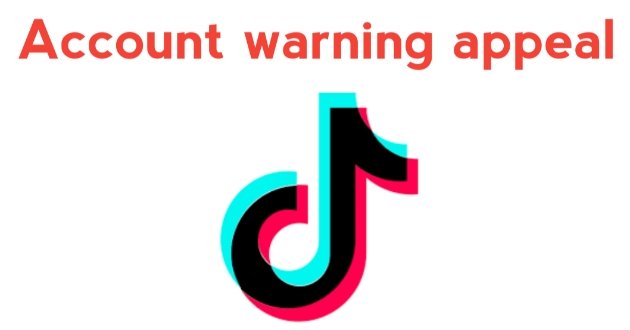In recent years, TikTok has emerged as one of the most popular social media platforms globally, captivating millions with its short-form videos and catchy trends. However, amid its popularity, concerns have been raised regarding the content shared on the platform, particularly regarding its potential impact on younger users. This article delves into the TikTok warning appeal, examining the risks associated with the platform and the responsibilities of both users and the company itself.

The Appeal of TikTok: A Cultural Phenomenon
TikTok’s rapid rise to prominence can be attributed to several factors, including its user-friendly interface, algorithm-driven content discovery, and the ability for anyone to create and share engaging videos. The platform has become a cultural phenomenon, shaping trends in music, fashion, and internet culture. With its diverse user base spanning different age groups and demographics, TikTok has become a melting pot of creativity and entertainment.
The Dark Side of TikTok: Risks and Concerns
While TikTok offers a seemingly endless stream of entertainment, it is not without its drawbacks. One of the primary concerns surrounding the platform is its potential to expose users, particularly children and teenagers, to inappropriate or harmful content. Despite efforts to moderate content, instances of cyberbullying, explicit material, and dangerous challenges persist on the platform, raising questions about its safety and suitability for younger audiences.
The Impact on Younger Users: Navigating Online Spaces
Younger users, in particular, are vulnerable to the influence of TikTok and may be more susceptible to the negative effects of certain content. The platform’s addictive nature and the pressure to conform to popular trends can contribute to issues such as low self-esteem, body image issues, and excessive screen time. Parents and caregivers play a crucial role in helping children navigate online spaces responsibly and teaching them to critically evaluate the content they consume.
TikTok’s Responsibility: Moderation and Regulation
As a leading social media platform, TikTok bears a significant responsibility to ensure the safety and well-being of its users. While the company has implemented measures to moderate content and protect users from harmful material, challenges remain in effectively enforcing these policies at scale. TikTok must continue to invest in robust moderation tools, enhance transparency, and collaborate with experts to address emerging threats and safeguard its community.
User Accountability: Promoting Positive Behavior
In addition to the efforts of the platform itself, users also have a role to play in promoting a positive and respectful environment on TikTok. By adhering to community guidelines, reporting inappropriate content, and engaging in constructive dialogue, users can contribute to a safer and more enjoyable experience for everyone. It is essential for users to exercise caution when sharing personal information and to be mindful of the potential consequences of their actions online.
Educational Initiatives: Empowering Users with Knowledge
Education is key to empowering users to make informed decisions about their online behavior. TikTok, along with schools, parents, and advocacy groups, can play a vital role in providing resources and guidance on digital literacy, online safety, and responsible social media use. By equipping users with the knowledge and skills to navigate TikTok and other online platforms safely, we can help mitigate the risks associated with digital engagement.
Conclusion: Navigating the TikTok Landscape
In conclusion, while TikTok offers a wealth of entertainment and creative expression, it is essential to approach the platform with caution and awareness of the potential risks involved. By understanding the responsibilities of both users and the company, implementing effective moderation and regulation measures, and prioritizing education and awareness, we can create a safer and more positive online environment for all. Ultimately, by working together, we can harness the power of TikTok for good while mitigating its potential pitfalls.
In the vast landscape of social media platforms, TikTok has emerged as a titan, captivating millions with its short-form video content. While it offers endless entertainment, its allure comes with a caveat: lurking beneath the surface are various safety concerns. From privacy breaches to predatory behavior, TikTok presents a complex terrain for users to navigate. In this article, we’ll delve into the warning issues associated with TikTok, dissecting the key areas of concern.
Privacy Predicaments:
One of the foremost concerns with TikTok revolves around privacy. Users, often unaware of the platform’s data collection practices, may unwittingly expose sensitive information. TikTok’s algorithm, designed to tailor content to individual preferences, collects vast amounts of data, including location, device information, and browsing history. This data, if mishandled, poses a significant risk to user privacy.
Inappropriate Content:
Despite efforts to moderate content, TikTok remains a breeding ground for inappropriate material. From explicit language to graphic imagery, users, particularly minors, are susceptible to encountering content unsuitable for their age group. The platform’s recommendation algorithm, while efficient in promoting viral content, occasionally fails to filter out such material, exposing users to potential harm.
Cyberbullying Epidemic:
Like many social media platforms, TikTok grapples with the pervasive issue of cyberbullying. The anonymity afforded by the internet emboldens individuals to engage in harassing behavior, targeting users with hurtful comments and malicious messages. Despite measures to combat cyberbullying, such as content moderation and reporting systems, the sheer volume of users makes it challenging to eradicate entirely.
Predatory Practices:
TikTok’s user base skews younger, making it a prime hunting ground for predators. The platform’s lax age verification process allows individuals to misrepresent their age, posing as peers to gain the trust of unsuspecting users. Once established, predators may exploit this trust to coerce minors into sharing personal information or engaging in inappropriate activities.
Addictive Design:
TikTok’s addictive nature is both a blessing and a curse. While it keeps users engaged for extended periods, fostering a sense of community and entertainment, it also contributes to screen time addiction. The platform’s endless scroll feature, coupled with its algorithmically curated content, hooks users into a cycle of consumption, often to the detriment of their mental health and productivity.
Mitigating the Risks:
Despite its pitfalls, TikTok can be enjoyed safely with proper precautions in place. Users should familiarize themselves with the platform’s privacy settings, opting to limit data collection wherever possible. Additionally, exercising caution when interacting with content and users can help mitigate the risks of encountering inappropriate material or individuals.
Parents play a crucial role in safeguarding their children’s online experience. By establishing open communication and setting boundaries around TikTok usage, they can empower their children to navigate the platform responsibly. Monitoring screen time and periodically reviewing their child’s activity on TikTok can provide insights into any potential safety concerns.
TikTok itself bears a responsibility to prioritize user safety. Enhancing moderation efforts, improving age verification protocols, and implementing stricter guidelines for content creators are steps the platform can take to foster a safer environment for all users. Additionally, investing in educational initiatives to raise awareness about online safety and digital citizenship can empower users to make informed decisions.
Dear TikTok Team,
I am writing to appeal the warning on my TikTok account, [Your TikTok Username]. I assure you that I take TikTok’s community guidelines seriously and have addressed any issues that led to the warning. I kindly request a review of my account and the removal of the warning.
Thank you for your consideration.



